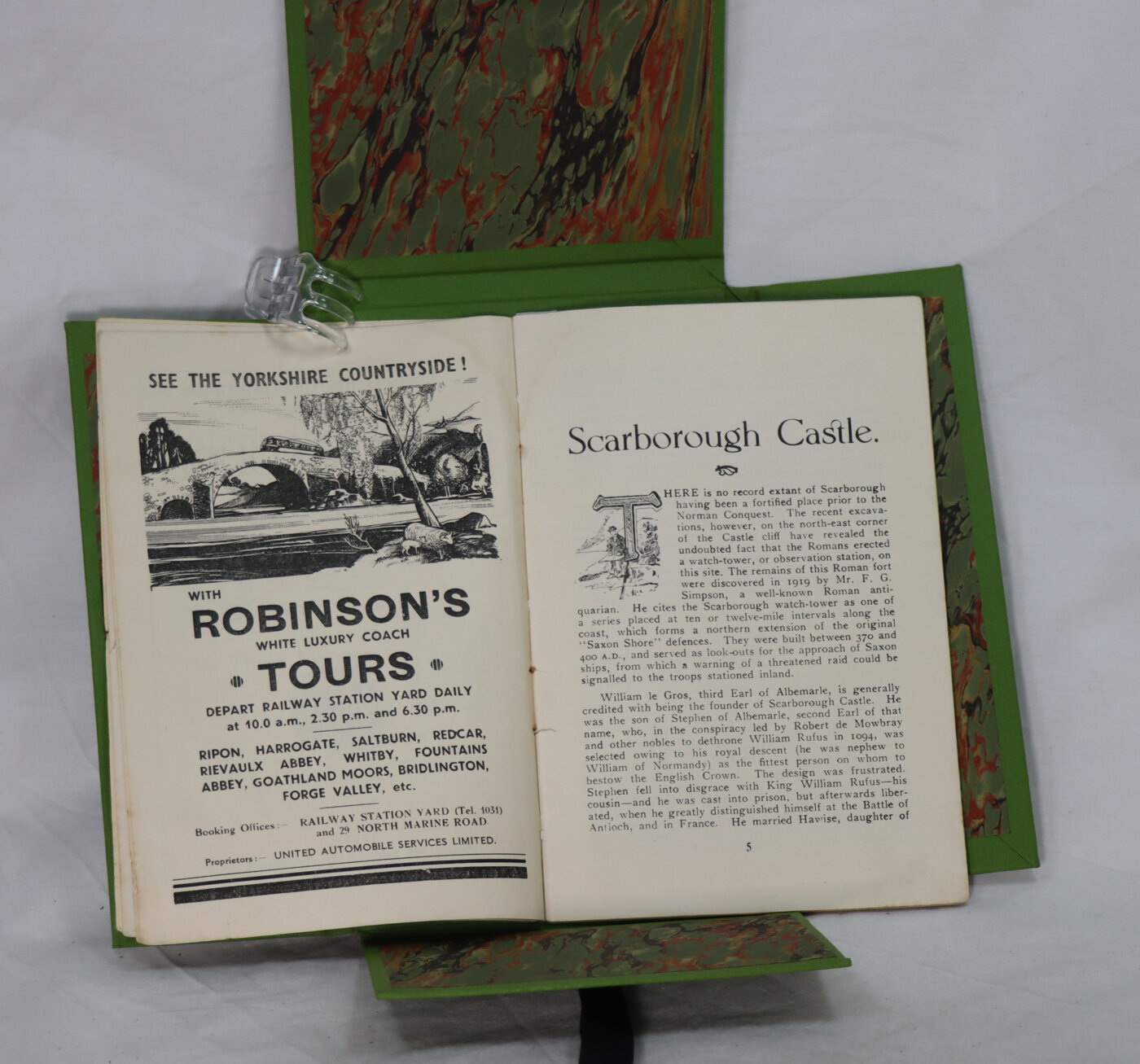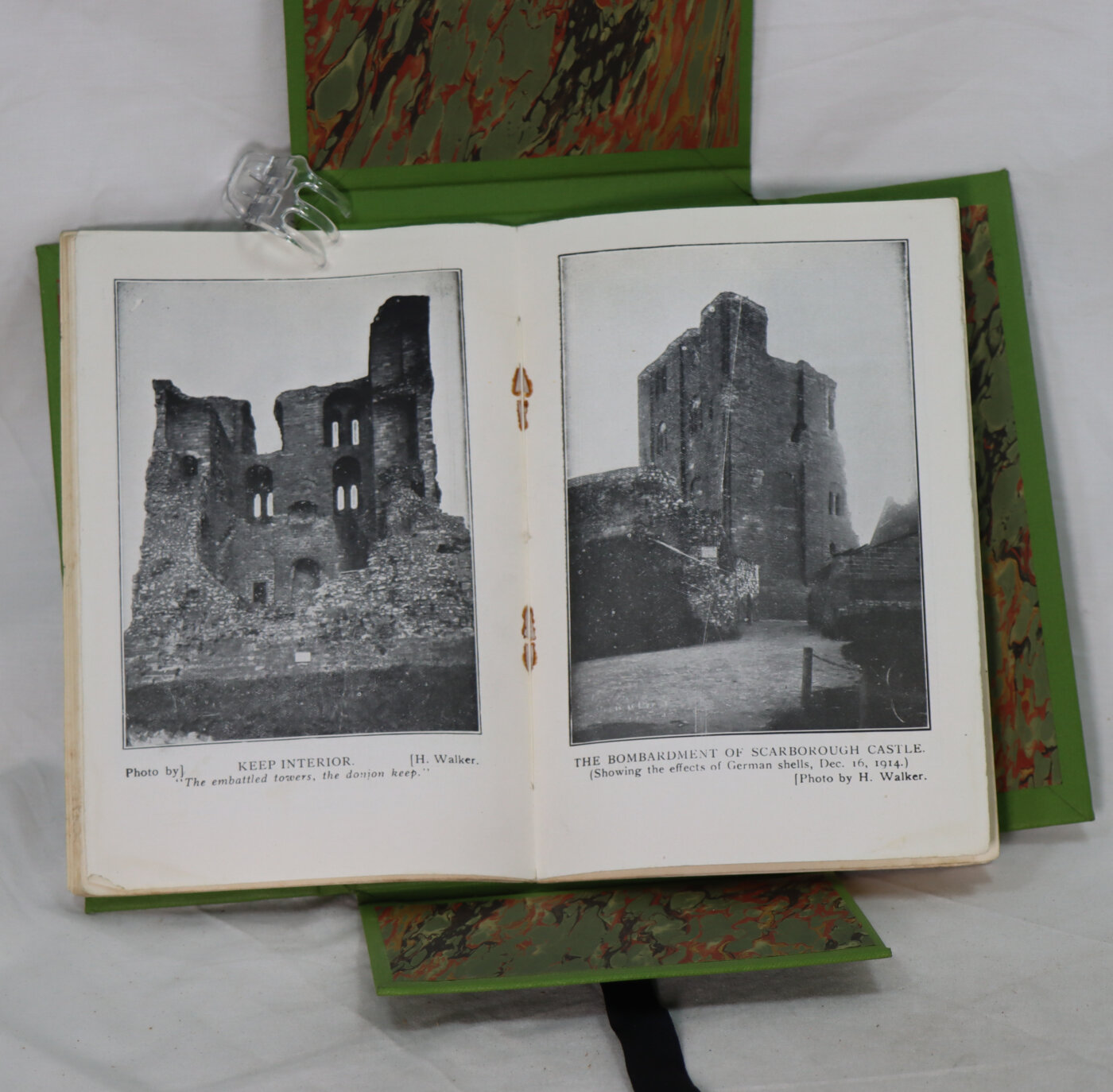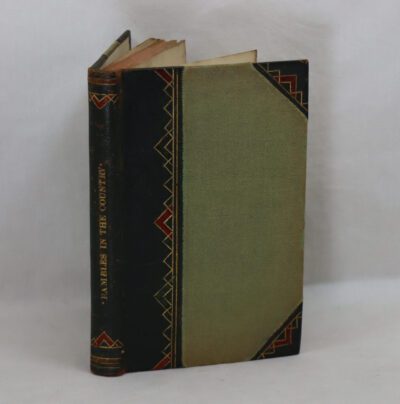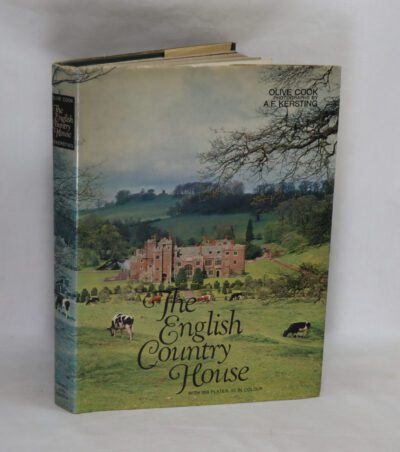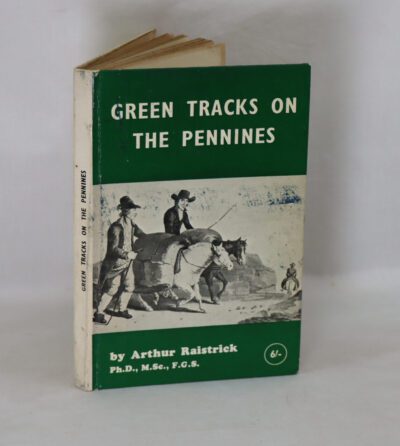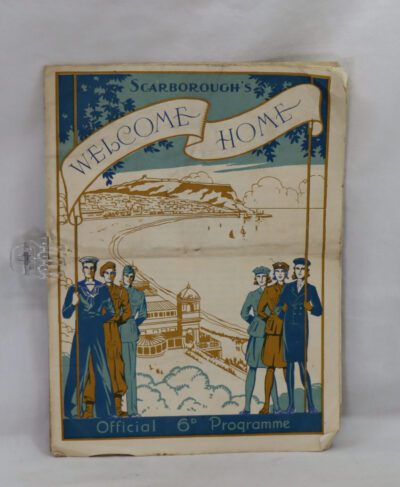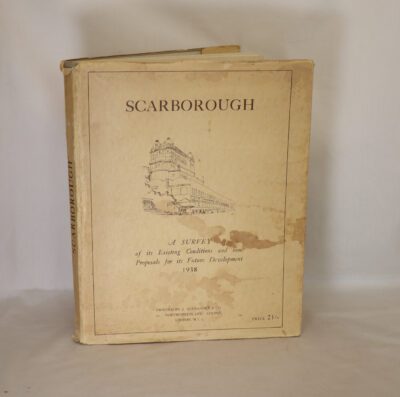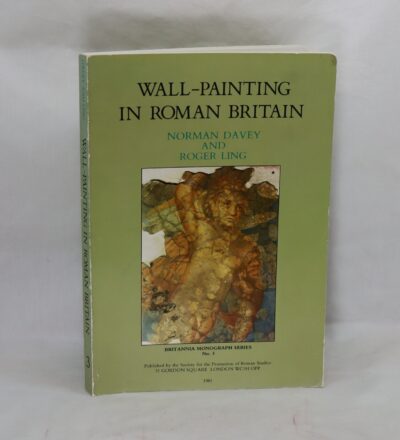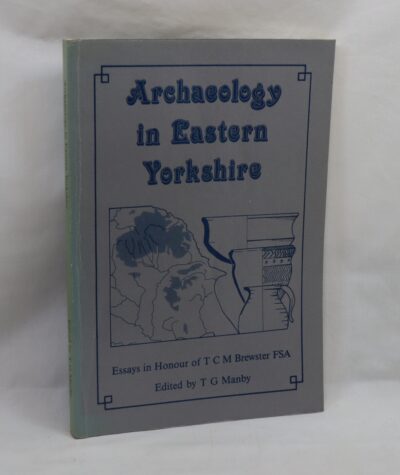The search for your perfect item starts here ...
Waddington's Guide to Scarborough Castle.
By Waddingtons, York
Printed: circa 1910
Publisher: Waddingtons. York
| Dimensions | 14 × 19 × 1 cm |
|---|---|
| Language |
Language: English
Size (cminches): 14 x 19 x 1
Condition: Fine (See explanation of ratings)
Item information
Description
Cream card booklet with red and black title and Castle picture on the front cover. Boxed in a newly made presentation folder. Measurements are for the folder.
F.B.A. provides an in-depth photographic presentation of this item to stimulate your feeling and touch. More traditional book descriptions are immediately available
Note: This book carries the £5.00 discount to those that subscribe to the F.B.A. mailing list.
A nicely boxed, very rare Waddington’s 1920’s Guide to Scarborough Castle.
Scarborough Castle is a former medieval royal fortress situated on a rocky promontory overlooking the North Sea and Scarborough, North Yorkshire, England. The site of the castle, encompassing the Iron Age settlement, Roman signal station, an Anglo-Scandinavian settlement and chapel, the 12th-century enclosure castle and 18th-century battery, is a scheduled monument of national importance.
Fortifications for a wooden castle were built in the 1130s, but the present stone castle dates from the 1150s. Over the centuries, several other structures were added, with medieval monarchs investing heavily in what was then an important fortress that guarded the Yorkshire coastline, Scarborough’s port trade, and the north of England from Scottish or continental invasion. It was fortified and defended during various civil wars, sieges and conflicts, as kings fought with rival barons, faced rebellion and clashed with republican forces, though peace with Scotland and the conclusion of civil and continental wars in the 17th century led to its decline in importance.
Once occupied by garrisons and governors who often menaced the town, the castle has been a ruin since the sieges of the English Civil War, but attracts many visitors to climb the battlements, take in the views and enjoy the accompanying interactive exhibition and special events run by English Heritage.
Henry de Percy, who occupied the castle from 1308, had a bakehouse, brewhouse and kitchens built in the inner bailey, and the castle was once again made into a major fortification. Edward II (reigned 1307–1327) imprisoned some of his Scottish enemies there in 1311.
In 1312 he gave Isabella de Vesci the castles of Bamburgh and Scarborough. The castle was considered to be the natural place for the king’s favourite knight, the Gascon Piers Gaveston, to seek sanctuary when pursued by the barons who had imposed the Ordinances of 1311. The Ordinances were imposed to curb the King’s power, and the barons saw Gaveston as a threat to their interests. Sir Robert Felton was governor of Scarborough Castle in 1311 and was slain at Stirling in 1314. In April 1312, Edward made Gaveston the governor of Scarborough Castle, but his tenure would be brief. In May, the Earls of Pembroke and Warenne, together with Henry de Percy, besieged and took the castle. Despite its strong defences, it fell quickly due to lack of provisions. Gaveston was promised safe escort from the castle, but on the journey south was captured by the Earl of Warwick and killed. Scarborough fared little better; Edward punished the town for not supporting Gaveston by revoking its royal privileges and placing it under the direct rule of appointed governors.
During the First World War, Scarborough was used for British propaganda purposes after the bombardment of the town by two warships of the German Empire, SMS Derfflinger and SMS Von der Tann, on 16 December 1914. The raid killed 19 people and damaged the castle’s keep, barracks and curtain walls. The castle was severely damaged by the hail of 500 shells directed at it and the town. The barracks were demolished due to the extensive damage wrought by the bombardment. In the Second World War, the castle served as a secret listening post.
Want to know more about this item?



